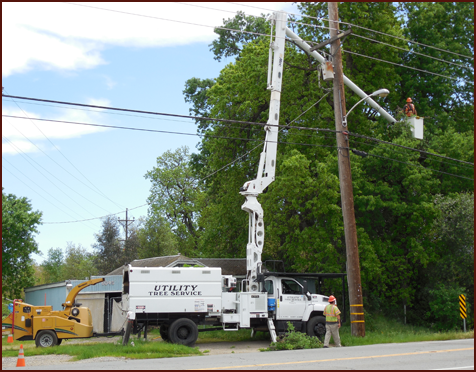The 6 Biggest Mistakes Homeowners Make When Trimming Their Own Trees
Caring for the trees on your property stands as a fundamental responsibility of homeownership. Consistent tree trimming not only elevates the visual allure of your landscape but also fosters the well-being and longevity of your trees. Yet, in their endeavor to cut costs or independently manage the task, numerous homeowners inadvertently commit significant errors while undertaking the pruning of their own trees. Within this article, we will delve into the six most substantial mistakes and offer valuable insights on how to steer clear of them.

Improper Pruning Techniques
A prevalent error among homeowners engaged in tree trimming involves the utilization of improper pruning techniques. This includes over-pruning, topping, or making indiscriminate cuts. Excessive pruning, characterized by the removal of an abundance of branches at once, has the potential to weaken the tree, rendering it more susceptible to diseases. Topping, the removal of large branches or the upper portion of the tree, not only compromises the tree’s structure but also leads to rapid, unhealthy regrowth.
Avoidance Tip: Educate yourself on proper pruning techniques or consult with a certified arborist before taking on a trimming project. Focus on removing dead, damaged, or crossing branches while maintaining the tree’s natural shape.
Ignoring Tree Health Signs
Homeowners often trim their trees without considering the overall health of the tree. Ignoring signs of disease or pest infestation can exacerbate existing problems. Trimming a sick tree without addressing the underlying issues can lead to further decline.
Avoidance Tip: Before starting any trimming, inspect your trees for signs of disease, pests, or stress. If you notice discoloration, abnormal growths, or dieback, consult with an arborist to identify the underlying problem and develop a proper course of action.
Timing Matters: Incorrect Season for Trimming
Timing is crucial when it comes to tree trimming. Some homeowners trim their trees at the wrong time of the year, disrupting the natural growth cycles. For instance, pruning during the active growing season can stress the tree and leave it more susceptible to diseases and pests.
Avoidance Tip: Research the appropriate time to trim specific tree species in your region. In general, late fall or early winter is often recommended when trees are dormant, reducing stress and potential harm.
Ignoring Safety Measures
Trimming trees involves working at heights and handling potentially dangerous tools. Many homeowners underestimate the risks associated with tree trimming and neglect safety measures. This can lead to accidents, injuries, or damage to property.
Avoidance Tip: Prioritize safety by wearing appropriate protective gear, using sturdy ladders, and employing the help of a spotter if needed. If the trimming project involves tall or difficult-to-reach branches, consider hiring a professional tree service.
Overlooking Local Regulations
Homeowners may not be aware of or may overlook local regulations regarding tree trimming. Some municipalities have specific guidelines and permitting requirements for tree work. Performing unauthorized tree trimming can lead to legal consequences and fines.
Avoidance Tip: Check with your local city or county authorities to understand the regulations regarding tree trimming on your property. Obtain any necessary permits before starting the trimming process to ensure compliance with local laws.
Neglecting the Use of Proper Tools
Using the wrong tools or poorly maintained equipment is a common mistake when homeowners undertake tree trimming. Dull or inappropriate tools can cause unnecessary damage to the tree, create uneven cuts, and increase the risk of accidents.
Avoidance Tip: Invest in high-quality, sharp pruning tools suitable for the size and type of branches you’ll be cutting. Regularly maintain and clean your tools to ensure optimal performance and longevity.
In conclusion, while the desire to maintain your trees on your own is commendable, it’s crucial to avoid these common mistakes to ensure the health and safety of your trees, as well as your own. In moments of uncertainty, turning to the expertise of a certified arborist or enlisting the services of a professional tree service can prove to be a wise investment, sparing you time, financial resources, and potential complications in the long term. Bear in mind that a meticulously cared-for tree not only enhances the aesthetic charm of your property but also plays a pivotal role in bolstering the overall health of the environment.

